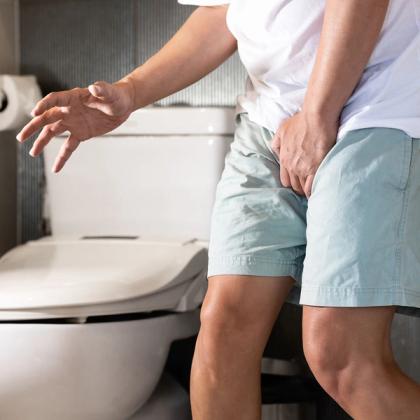This podcast episode is worth 0.33 CPD credits. Upgrade to Pro
Benign prostatic hyperplasia (BPH) is an extremely common condition seen in clinical practice, and one which can cause considerable difficulties in older men. Common symptoms include frequent urination, difficulty starting urination, weak urine stream or the need to urinate during the night – all of which significantly impact on quality of life. Treatment options vary depending on symptom severity and can include no treatment, medication, minimally invasive procedures or surgery. In this episode, Dr Roger Henderson looks at the key things to remember when assessing a patient with BPH and covers the newer treatments now available as well as more traditional conventional options.
Key references
- Berry SJ, et al. J Urol. 1984;132(3):474-479. doi: 10.1016/s0022-5347(17)49698-4.
- Lee SWH, et al. Sci Rep. 2017;7(1):7984. doi: 10.1038/s41598-017-06628-8.
- NICE. LUTS in men. https://cks.nice.org.uk/topics/luts-in-men/.
- USRF. International Prostate Symptom Score. https://www.usrf.org/questionnaires/AUA_SymptomScore.html.
- European Association of Urology. Management of non-neurogenic male LUTS. https://uroweb.org/guidelines/management-of-non-neurogenic-male-luts.
- American Urological Association. https://www.auanet.org/guidelines-and-quality/guidelines/benign-prostatic-hyperplasia-(bph)-guideline.
- NICE. How should I assess a person with suspected prostate cancer? https://cks.nice.org.uk/topics/prostate-cancer/diagnosis/assessment/.
- Carballido J, et al. Int J Clin Pract. 2011;65(9):989-996. doi: 10.1111/j.1742-1241.2011.02735.x.
- Reich O, et al. Eur Urol. 2006;49(6):970-978; discussion 978. doi: 10.1016/j.eururo.2005.12.072.
Key take-home points
- Up to 90% of men will have BPH to some degree by the age of 90.
- Voiding symptoms linked to BPH include hesitancy, a weak stream, intermittency and post-void dribbling.
- Storage symptoms include nocturia, urgency and frequency.
- The International Prostate Symptoms Score should be used as part of the initial patient assessment.
- A gentle digital rectal examination is unlikely to affect a prostate-specific antigen test result.
- Do not delay urological referral if red-flag symptoms are present.
- If possible, urine flow rate should be measured before a treatment pathway is decided.
- Imaging such as ultrasound can be helpful to diagnose any urinary tract obstruction and to determine the choice of medical therapy.
- In patients with minimal symptoms and no evidence of prostate cancer, ”watchful waiting” may be the most appropriate treatment.
- With mild symptoms that do not significantly affect a patient’s quality of life, lifestyle changes may be sufficient. These include fluid restriction, avoidance of caffeine, bladder retraining, avoidance of constipation and weight loss.
- There is a wide range of medical treatments now available. Most patients are commenced on an alpha-blocker but other options include 5-alpha-reductase inhibitors, phosphodieterase-5 inhibitors (if erectile dysfunction is also present), anticholinergics and beta-3 adrenergic agonists.
- Surgery is typically reserved for when medical treatment has failed or if there is a large prostate gland causing symptoms.
- Transurethral resection of the prostate (TURP) is the standard surgical procedure for men requiring surgery with a prostate size less than 80 g.
- Other treatments include transurethral electrovapourization of the prostate (TUVP), the UroLift system, water vapour thermal therapy and transurethral incision of the prostate (TUIP).
Create an account to add page annotations
Annotations allow you to add information to this page that would be handy to have on hand during a consultation. E.g. a website or number. This information will always show when you visit this page.
